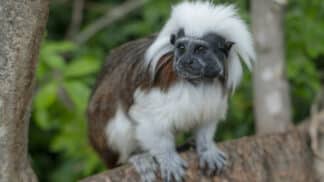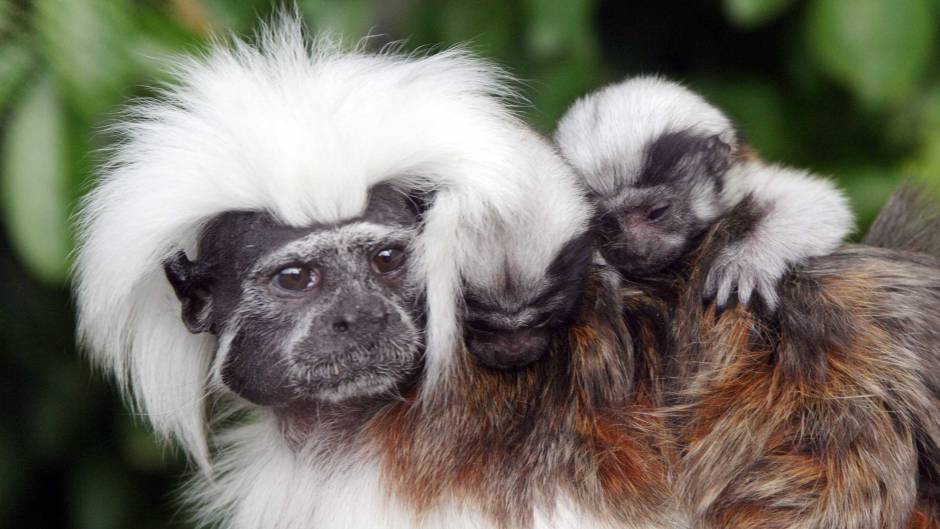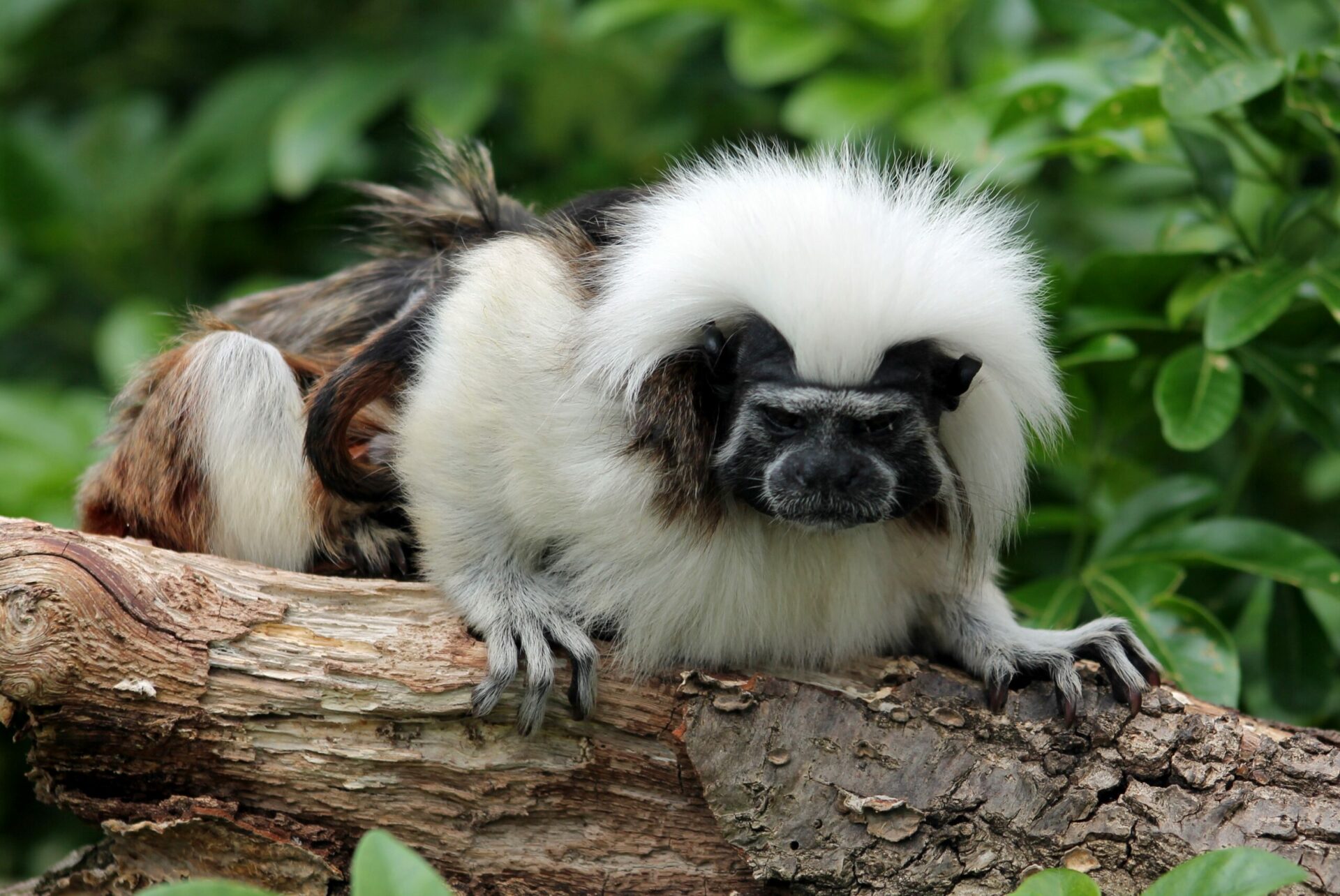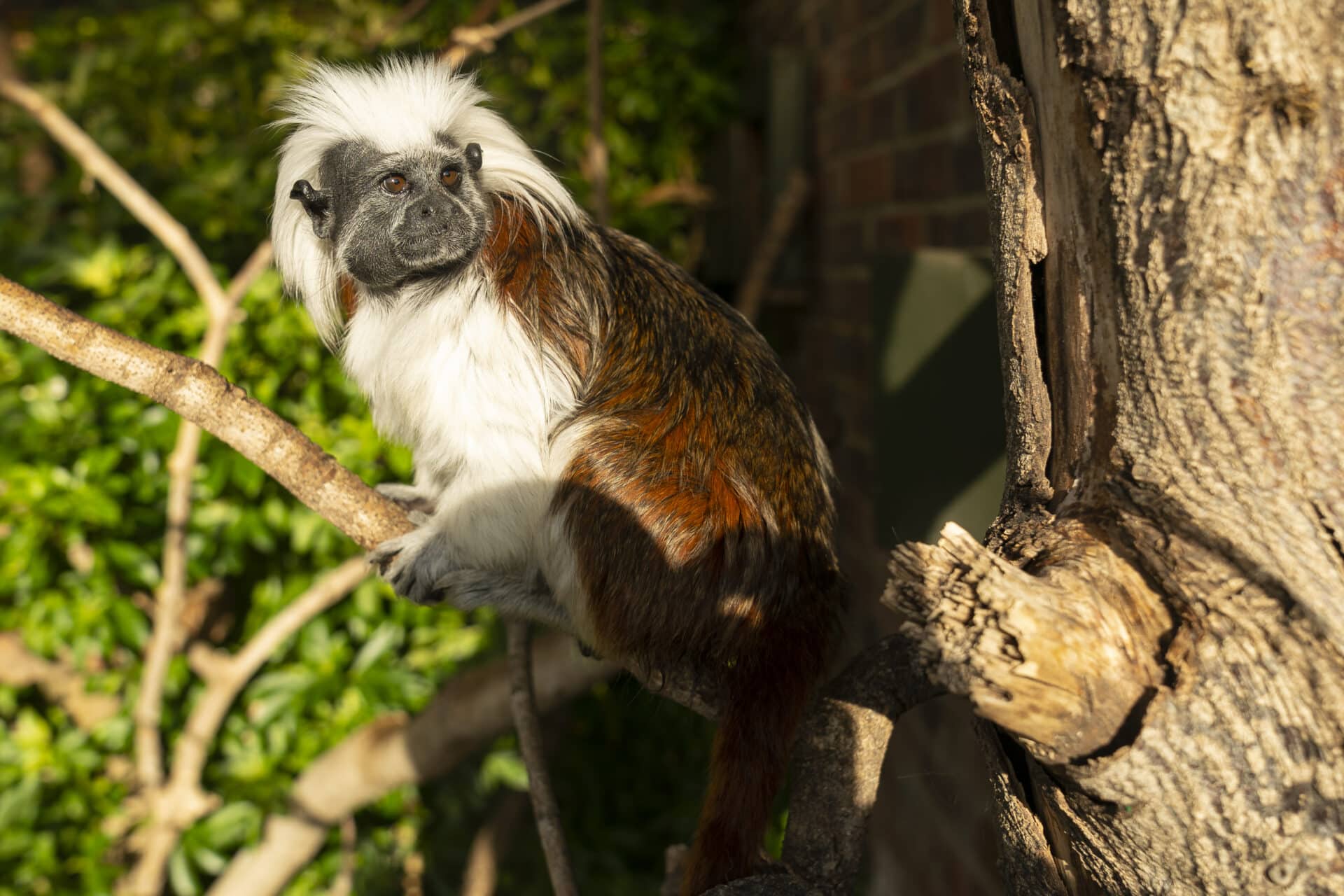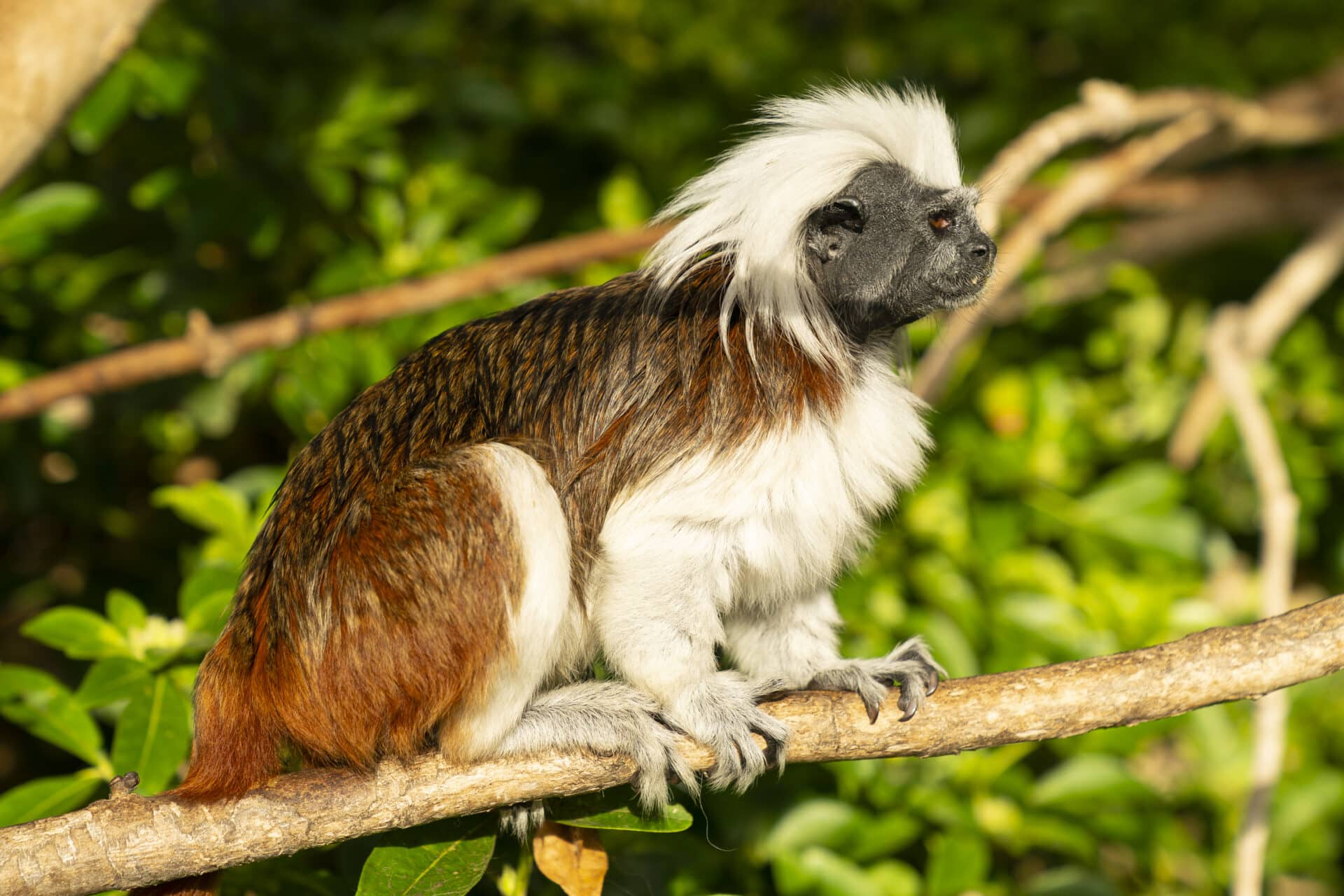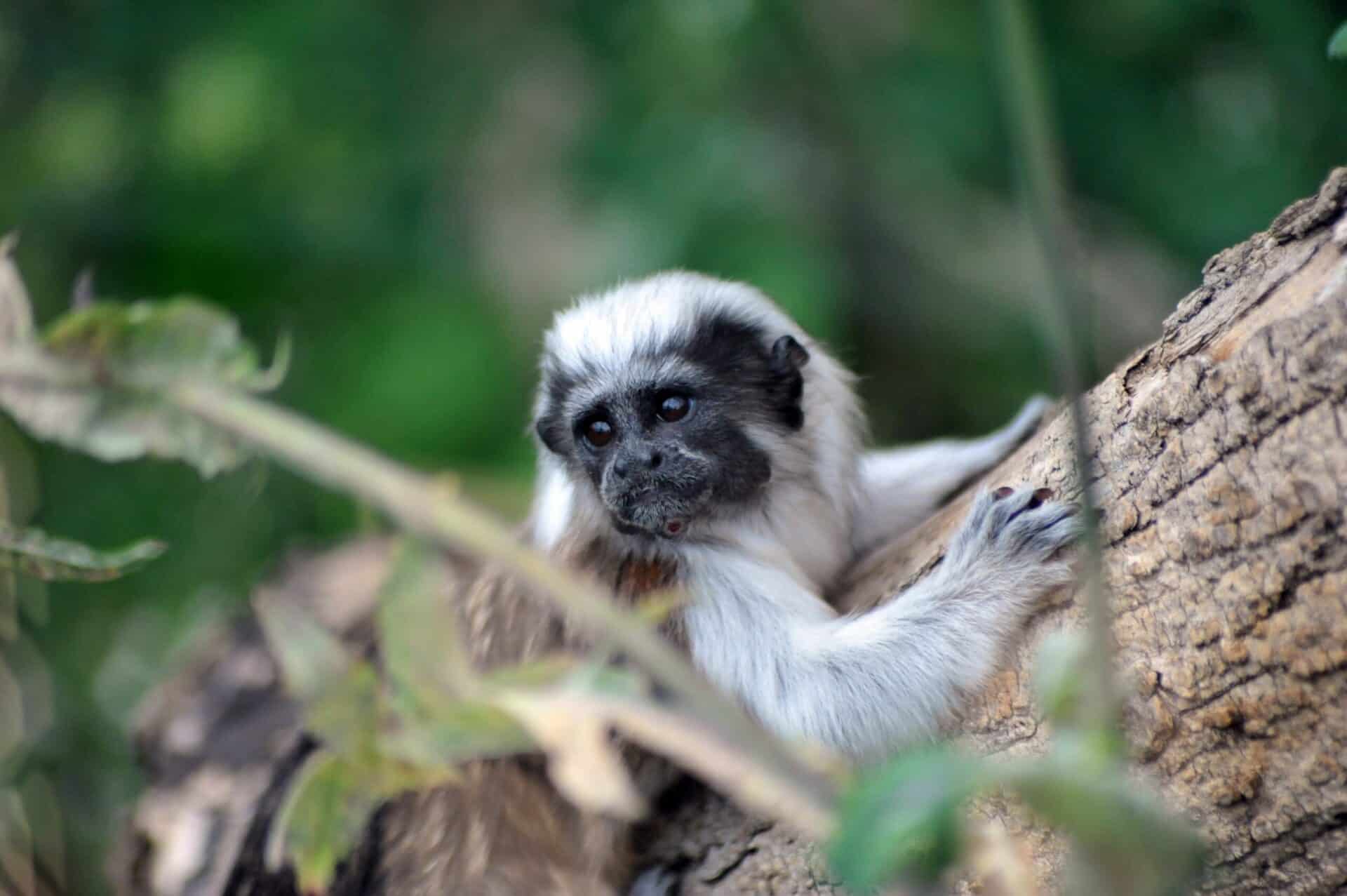Cotton-headed tamarin
Common Name: Cotton-headed tamarin
Scientific Name: Saguinus oedipus
Tamarins are able to leap from tree trunk to tree trunk, gripping onto the tree bark with their claw-like nails.
When resting or sleeping, tamarins coil their long tail over their shoulder and along their back.
Groups of tamarins use contact calls to stay in touch with each other when they are moving through the forest.
Fast Facts
-
Status
Critically Endangered
-
Size
Head-body: 21-26 cm; tail length: 33-44 cm
-
Weight
417g
-
Gestation
183 days
-
Young
2
-
Life span
25 years
In the wild
Cotton-headed tamarins are omnivores. They eat a varied diet which includes fruit, flowers, nectar, plant exudates (gums, sap and latex), and prey including frogs, snails, lizard, spiders and insects. These tamarins generally search for prey in the middle and lower canopy.
This species is found only in north-western Colombia. They live in a variety of primary forests (which haven’t been logged or managed by people) as well as secondary forests (which have been disturbed), including humid forest and dry deciduous forest.
Female cotton-headed tamarins typically give birth to one litter of twins every year. Tamarins live in family groups, generally of between two and eight individuals. Usually, only one female in a group will breed. Other members of the group help to look after the young, helping to carry them and giving them food when they are being weaned and until they are completely independent. Young cotton-headed tamarins become independent by about 5 months of age.
Due to their small size, and the fact that they are active during the day, cotton-headed tamarins are prey for many different predators. Their predators can include snakes, cats, and a variety of birds of prey. Cotton-headed tamarins used to be trapped in large numbers for the pet trade and to be used in medical research, but this was banned in 1974.
Cotton-headed tamarins are seriously threatened by the destruction of their habitat. They are found in three protected areas, but even these areas have lost a significant amount of their forests. This species has been protected in Colombia since 1969 and they are listed on CITES Appendix I, which means that the trade in these animals or any of their parts is illegal. Cotton-headed tamarins used to be trapped in large numbers for the pet trade and to be used in medical research, but this was banned in 1974.
